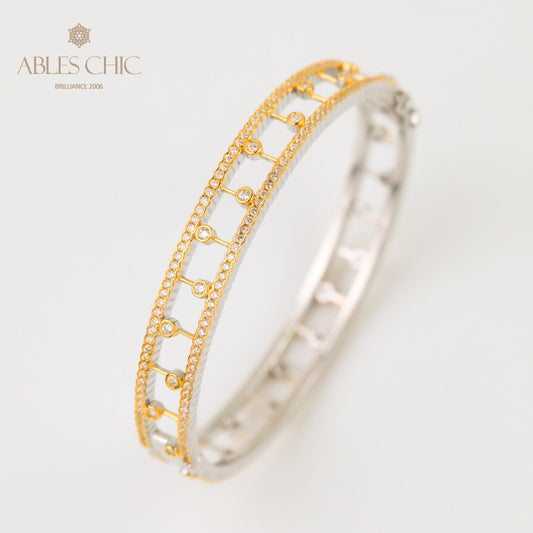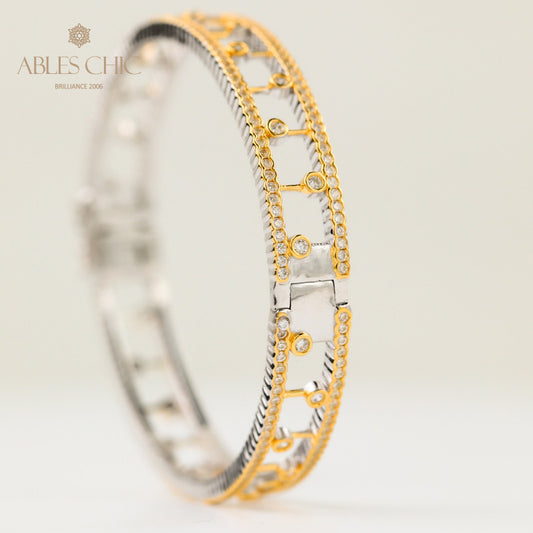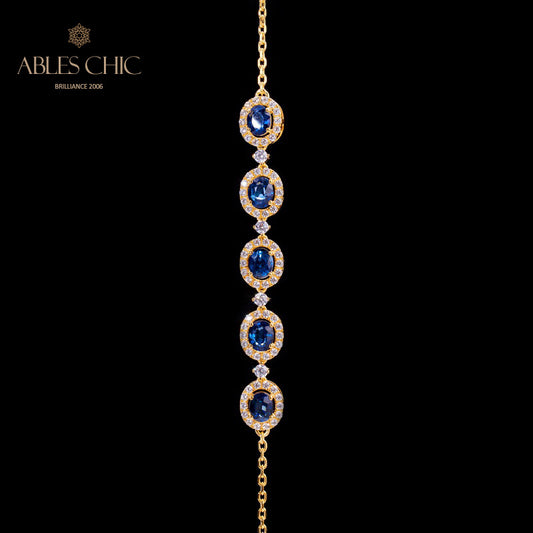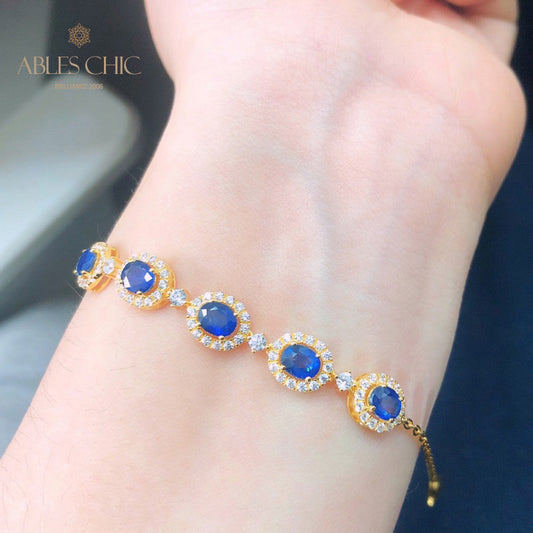Collection: Renaissance Bracelets
-
Iconic Floral Bracelet 5250
Vendor:Sterling SilverRegular price $170Regular priceUnit price / per$0Sale price $170 -
Airy Clovers Honeycomb Bracelet 5244
Vendor:Sterling SilverRegular price $170Regular priceUnit price / per$0Sale price $170 -

 Sold out
Sold outHoneycomb Airy Bracelet 203700
Vendor:Sterling SilverRegular price $157Regular priceUnit price / per$0Sale price $157Sold out -
Natural Sapphire Rainbow Bangle 6413
Vendor:Sterling SilverRegular price $176Regular priceUnit price / per$0Sale price $176 -
Silky Element Clovers Bracelet 6037
Vendor:Sterling SilverRegular price $114Regular priceUnit price / per$0Sale price $114 -
Floral Filigree Bangle 6468
Vendor:Sterling SilverRegular price $132Regular priceUnit price / per$0Sale price $132 -
Halo Gem Chain Bracelet 5923
Vendor:Sterling SilverRegular price From $30Regular priceUnit price / per$0Sale price From $30 -

 Sold out
Sold outNatural Sapphire Chain Bracelet 5850
Vendor:Sterling SilverRegular price $123Regular priceUnit price / per$0Sale price $123Sold out -
Shell Agate Clover Bracelet 6168
Vendor:Sterling SilverRegular price $34Regular priceUnit price / per$0Sale price $34 -
Rope Pattern Matte Bracelet 5921
Vendor:Sterling SilverRegular price $66Regular priceUnit price / per$0Sale price $66 -
Infinity Rope Chain Beads Bracelet 6109
Vendor:Sterling SilverRegular price $98Regular priceUnit price / per$0Sale price $98 -
High Polished Clovers Bracelet 203707
Vendor:Sterling SilverRegular price $114Regular priceUnit price / per$0Sale price $114Sold out -
Fabric Clover Starry Zircon Bracelet 5775
Vendor:Sterling SilverRegular price $138Regular priceUnit price / per$0Sale price $138 -
Zircon Clovers Celtic Bracelet 5775
Vendor:Sterling SilverRegular price $139Regular priceUnit price / per$0Sale price $139 -
Oval Topaz Fretwork Bangle 6385
Vendor:Sterling SilverRegular price $327Regular priceUnit price / per$0Sale price $327 -
Natural Topaz Wide Bangle 6386
Vendor:Sterling SilverRegular price $350Regular priceUnit price / per$0Sale price $350
Renaissance Bracelets
Renaissance bracelets are a collection of exquisite jewelry pieces that showcase the artistry and elegance of the Renaissance era. Each bracelet is made of silky sterling silver that form a honeycomb pattern, adorned with intricate fretwork and sparkling 5A cubic zirconia stones. These bracelets are a testament to the craftsmanship and sophistication of the Renaissance culture, and they will add a touch of refinement and grace to any outfit. Whether you are looking for a gift for someone special or a treat for yourself, Renaissance bracelets are the perfect choice for anyone who appreciates beauty and history.
The Art and Craft of Renaissance Bracelets: Techniques and Materials
Renaissance bracelets were more than just accessories. They were symbols of status, wealth, and taste. They also showcased the skill and creativity of the artisans who made them. In this passage, we will explore some of the techniques and materials used to create these stunning pieces of jewelry.
Techniques
One of the most common techniques used to make Renaissance bracelets was enameling. This involved applying a thin layer of colored glass paste to a metal base, usually gold or silver, and then firing it in a kiln to fuse it. The result was a smooth and glossy surface that could be decorated with various patterns and motifs.
Another technique was filigree, which involved twisting and soldering thin wires of metal into intricate designs. Filigree bracelets often had openwork patterns that created a delicate and lace-like effect. Sometimes, filigree was combined with enameling or gemstones to add more color and sparkle.
Materials
Renaissance bracelets were made from various materials, depending on the style and preference of the wearer. Some of the most common materials were:
Gold: Gold was the most prized and expensive metal in the Renaissance. It was often used as the base for enameling or filigree, or as the setting for precious stones. Gold bracelets could also be engraved, chased, or embossed with intricate patterns.
Silver: Silver was another popular metal for Renaissance bracelets. It was cheaper than gold, but still had a bright and shiny appearance. Silver bracelets could also be gilded or plated with gold to enhance their value and beauty.
Gemstones: Gemstones added color and brilliance to Renaissance bracelets. Some of the most common gemstones were pearls, rubies, sapphires, emeralds, diamonds, and coral. Gemstones could be cut into various shapes and sizes, or left in their natural forms.
Glass: Glass was a cheaper alternative to gemstones, but still had a similar effect. Glass beads could be strung together to form bracelets, or used as accents in enameling or filigree. Glass could also be molded into various shapes and colors.
Renaissance bracelets were not only beautiful, but also meaningful. They reflected the personality, status, and taste of the wearer, as well as the skill and artistry of the maker. They were works of art that adorned the wrists of many people in the Renaissance era.
What are the common types and patterns of Renaissance bracelets?
Renaissance bracelets are a type of jewelry that were popular in Europe from the 14th to the 17th century. They were often made of gold, silver, pearls, gemstones, enamel, or glass. Renaissance bracelets had various styles and designs, depending on the region, period, and social class of the wearer. Some of the common types and patterns of Renaissance bracelets are:
Chain bracelets: These were simple bracelets made of linked metal rings or chains. They could be worn alone or with pendants or charms attached. Chain bracelets were common among both men and women of all classes.
Cuff bracelets: These were wide bracelets that covered the wrist and sometimes part of the forearm. They were usually made of metal or leather, and decorated with engraving, embossing, or inlaying. Cuff bracelets were more popular among men than women, and often worn by soldiers or noblemen.
Beaded bracelets: These were bracelets made of beads strung on a wire or thread. The beads could be made of glass, coral, amber, jet, or other materials. Beaded bracelets were mainly worn by women of the lower and middle classes, and sometimes combined with other types of bracelets.
Clasp bracelets: These were bracelets that had a clasp or a hook to fasten them around the wrist. They could be made of metal, leather, or fabric, and adorned with pearls, gemstones, enamel, or other ornaments. Clasp bracelets were more common among women than men, and often worn by ladies of the court or the wealthy.
Renaissance bracelets reflected the artistic and cultural trends of their time. They were not only accessories, but also symbols of status, identity, and expression.
Let customers speak for us
from 5 reviews
Absolutely stunning and sparkly. Very nice weight and amazing quality. The perfect Valentine’s Day gift for yourself!!

So great

Perfect and unique a powerful piece

Beautiful bracelet, great customer service.

A bit yellower than the image but I love it even more. Great communication and fast delivery! Will buy again.
































